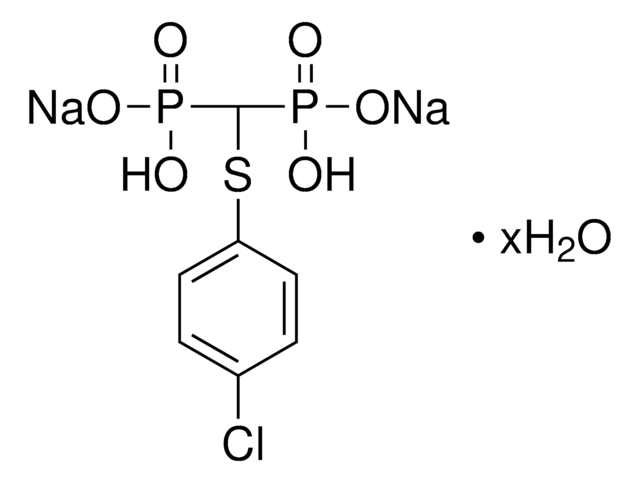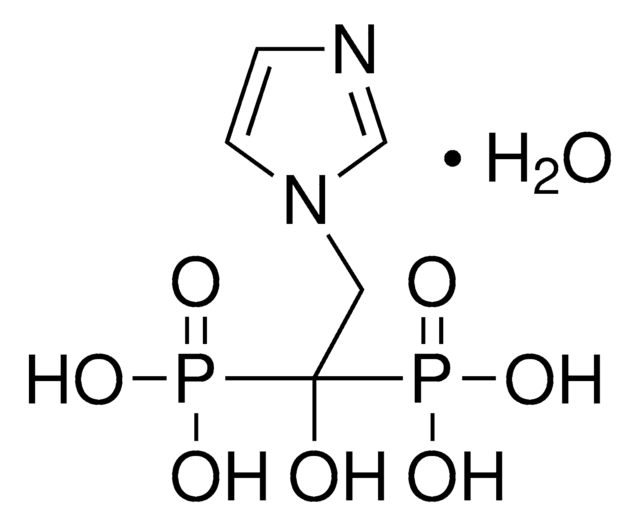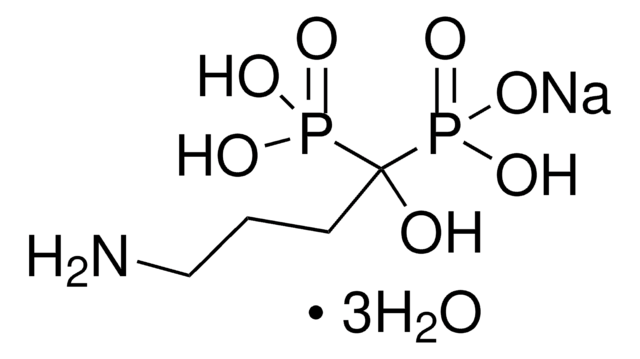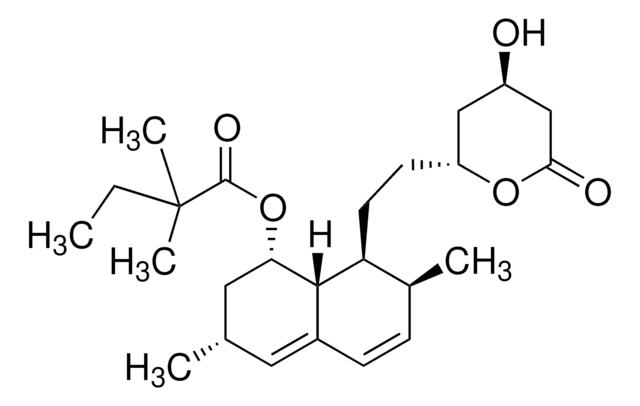I5784
Ibandronate sodium monohydrate
≥97% (NMR), solid
Sinónimos:
(1-Hydroxy-3-(methylpentylamino)propylidene)bisphosphonic acid sodium monohydrate, Bondronat
About This Item
Productos recomendados
Nivel de calidad
Ensayo
≥97% (NMR)
Formulario
solid
condiciones de almacenamiento
protect from light
color
white
solubilidad
H2O: >10 mg/mL
emisor
Roche
temp. de almacenamiento
2-8°C
cadena SMILES
[Na+].CCCCCN(C)CCC(O)(P(O)(O)=O)P(O)([O-])=O
InChI
1S/C9H23NO7P2.Na/c1-3-4-5-7-10(2)8-6-9(11,18(12,13)14)19(15,16)17;/h11H,3-8H2,1-2H3,(H2,12,13,14)(H2,15,16,17);/q;+1/p-1
Clave InChI
LXLBEOAZMZAZND-UHFFFAOYSA-M
Información sobre el gen
human ... FDPS(2224)
Aplicación
Acciones bioquímicas o fisiológicas
Características y beneficios
Código de clase de almacenamiento
11 - Combustible Solids
Clase de riesgo para el agua (WGK)
WGK 3
Punto de inflamabilidad (°F)
Not applicable
Punto de inflamabilidad (°C)
Not applicable
Elija entre una de las versiones más recientes:
¿Ya tiene este producto?
Encuentre la documentación para los productos que ha comprado recientemente en la Biblioteca de documentos.
Los clientes también vieron
Nuestro equipo de científicos tiene experiencia en todas las áreas de investigación: Ciencias de la vida, Ciencia de los materiales, Síntesis química, Cromatografía, Analítica y muchas otras.
Póngase en contacto con el Servicio técnico






